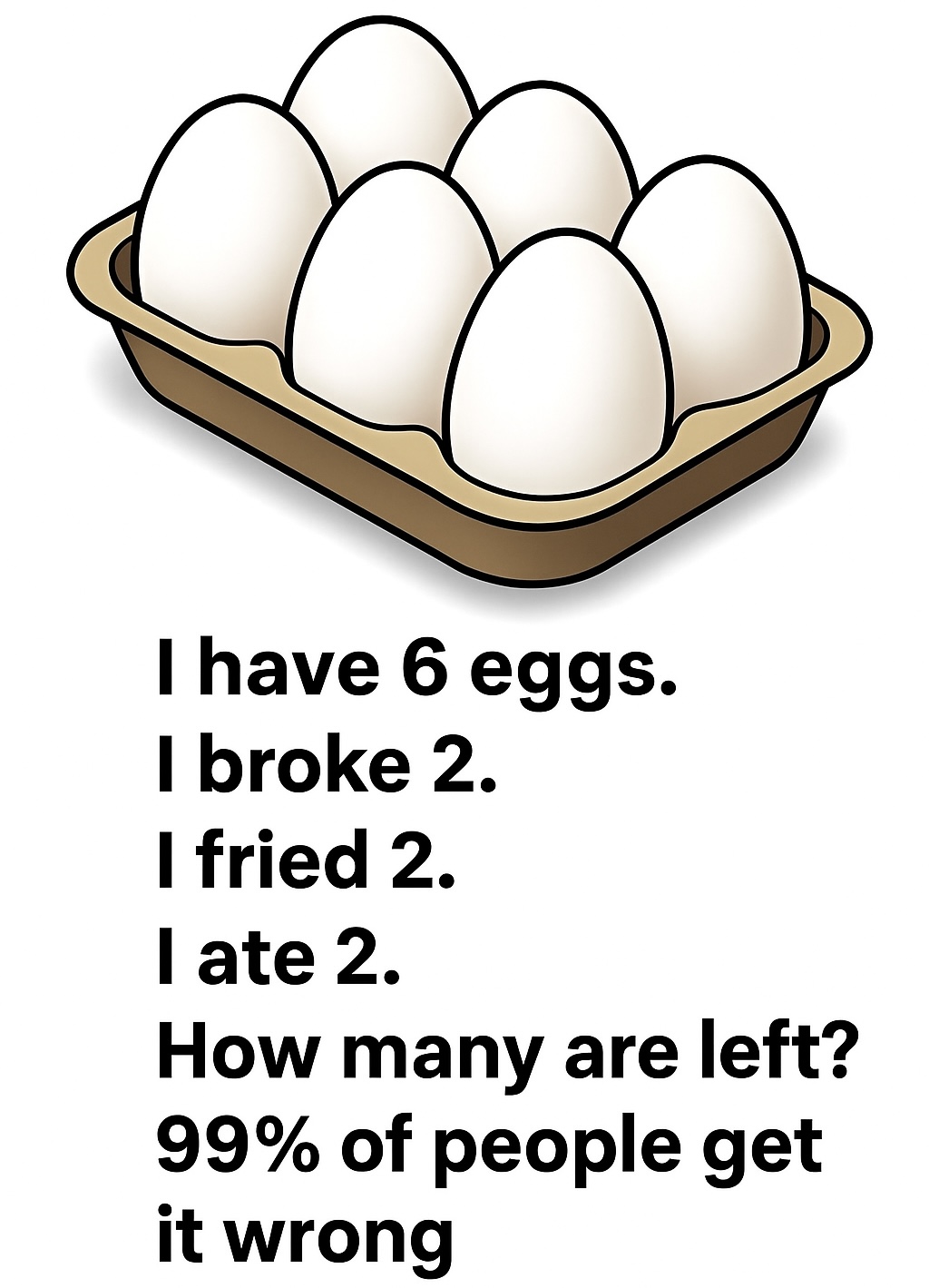Have you ever been puzzled by a question that seems simple at first? Like:
“I have six eggs. I break two, I cook two, and I eat two. How many are left?”
Most of us hesitate, do some quick mental math, and end up getting it wrong. But these riddles are simply logic games designed to challenge our brains—and our patience. So, why do they often trick us? And more importantly, how can we train ourselves to solve them without falling into the trap?
The Classic Trap of Everyday Riddles
These small riddles all share one thing in common: they play on our mental shortcuts. When we read them quickly, we jump straight to doing calculations without breaking down the actions step by step.
Let’s look at the example:
• You start with 6 eggs.
• You break 2: But be careful—breaking doesn’t mean the eggs are gone; they’re just prepared for cooking.
• You cook 2: These are the same 2 broken eggs.
• You eat 2: Again, these are the 2 eggs you cooked.
And this is where most people’s brains scream: “There are none left!”
But in reality, 4 eggs remain untouched.
This kind of confusion is completely human. We tend to associate actions like breaking or cooking with the idea that something is gone. As if the moment an egg is used, it disappears from the total count.
But think of it like this: if you break 2 eggs to cook them, the rest still remain in the fridge, right?
Next Page
